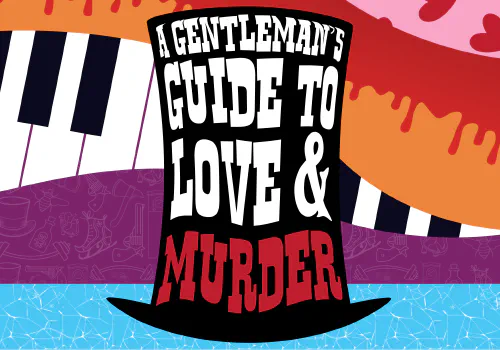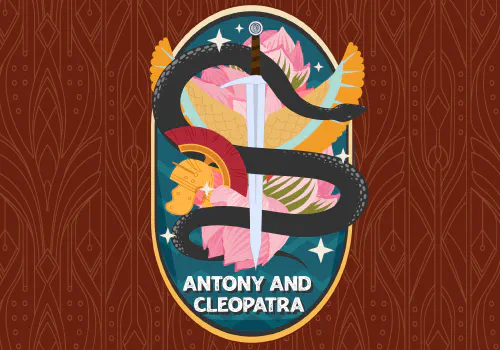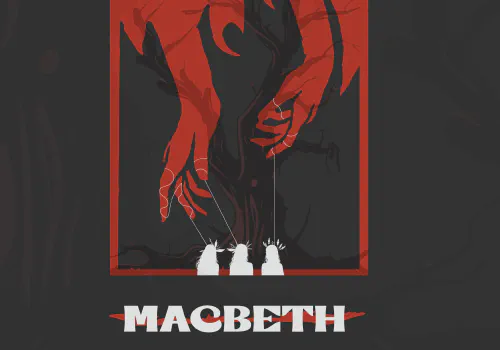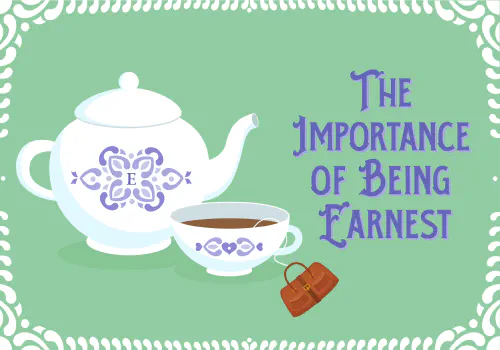NOTE: The articles in these study guides are not meant to mirror or interpret any particular productions at the Utah Shakespeare Festival. They are meant, instead, to be an educational jumping-off point to understanding and enjoying the play (in any production at any theatre) a bit more thoroughly. Therefore the stories of the plays and the interpretative articles (and even characters at times) may differ from what is ultimately produced on stage.
Also, some of these articles (especially the synopses) reveal the ending and other “surprises” in some plays. If you don’t want to know this information before seeing the plays, you may want to reconsider studying this information.
By Lawrence Henley
For a great evening at the theatre, a good farce is tough to beat. When you need a lift in spirits, uncontrolled laughter is a surefire way to get you there. One Man, Two Guvnors serves up gut-splitting hilarity in mass quantity. This hysterically funny play was adapted by prolific Brit playwright Richard Bean from Goldoni’s classic Italian farce, The Servant of Two Masters.
Premiering on May 24, 2011, at the English National Theatre’s Lyttleton Playhouse, the show’s popularity was immediate, necessitating a quick move to London’s West End. After that, One Man, Two Guvnors spawned three U.K. national tours, and then hit it big on Broadway. Seven Tony Award nominations, three Drama Desk Awards, and three Outer Critics Circle nods later, you’d have to admit this fantastic comedy is much more than just your average run-of-the-mill slapstick.
The lead role of Francis, frantic servant of Rachel Crabbe and Stanley Stubbers, was first performed by a brilliant, slightly corpulent young actor, singer, and comedian who’d achieved recent fame in England via the television series Gavin & Stacey (2007–10) and his inventive Carpool Karaoke celebrity feature with pop singer George Michael (2011). Today, of course, James Corden is a major multi-national star with his CBS television Late Late Show with James Corden and dozens of film and voiceover appearances. Corden’s work on One Man, Two Guvnors earned him the 2012 Tony Award for Best Performance by a Leading Actor in a Play.
Corden is a spitfire talent, possessing a verbally witty, yet highly physical style of comedy reminiscent of several great British comedians from earlier eras. Those riotously funny comics, such as Morecambe & Wise, The Goons, Peter Sellers, Dudley Moore and the clownish Benny Hill, were all descended of the great British Music Hall tradition. One Man, Two Guvnors embodies much of Music Hall’s rapid-fire pace, physicality, and caricature design sensibility.
Considering traditions, unless you’re watching a play written by the ancient Greek masters practically anything you’re going to see can be viewed as descended from some earlier theatrical tradition. One such tradition, a derivation of ancient Greek and Roman comedy, was the Commedia dell’Arte (or Zanni). The Commedia were roving, itinerant comedy troupes that became a theatrical staple of Europe for more than two and a half millennia prior to being outlawed by the Emperor Napoleon I.
Born of the Italian Renaissance, the Commedia’s vivid, stereotypical characters and standard comedic situations were very familiar to audiences, who basically knew what to expect from these primarily improvisational acting companies. Like theatre gypsies, Commedia troupes moved from town to town, week to week. Masked and colorfully costumed, these were highly captivating ensemble productions, if somewhat threadbare scenically.
Many of Europe’s greatest dramatists were influenced by the Commedia dell’Arte, most notably France’s Molière and Corneille, England’s Ben Jonson and Will Shakespeare, and Italians Carlo Gozzi and Carlo Goldoni. Goldoni (1707–1793), was the foremost eighteenth century writer of Italian comedy and operatic libretto. He penned The Servant of Two Masters in 1745, and his later masterworks include The Mistress of the Inn (1751) and I Rusteghi (1760).
Loaded with razor-sharp wit and hilarious stage antics, Goldoni’s plays also had a propensity for embedding stinging societal commentary within the text. He employed numerous dramatic devices such as disguise, mistaken identity, diversion, fictitious characters, and gender fluidity in his scripts. All of these literary vehicles had been popular since the Greco-Roman days, and both The Servant of Two Masters and One Man, Two Guvnors make ample use of them.
Clear parallels exist between the traditional Commedia stock characters, the roles in The Servant of Two Masters, and the flippant, arrogantly one-dimensional personalities in One Man, Two Guvnors. These include Francis, the harried, slightly devious yet endlessly creative valet/servant (Truffaldino/Harlequin or “Arlecchino”); the greedy old mobster Charlie “The Duck” Clench (Pantalone); his finagling solicitor Harry Dangle (Dr. Lombardi/Il Dottore); and inn proprietor Lloyd Boating (Brighella).
One Man, Two Guvnors sports not one, but two pairs of young lovers (Innamorati). These couples are the cleverly-disguised Rachel Crabbe and boyfriend Stanley Stubbers (Francis’ “Two Masters”), plus Clench’s youthful daughter Pauline and Dangle’s handsome actor son Alan (Clarice/Isabella and Silvio/Flavio). Dolly, the crafty, sexy and flirtatious accountant (Columbina/Smeraldina) tickles Francis’ fancy quite fancifully. And then there is old Alfie, the dutiful second waiter at the inn. Poor Alfie takes a real pounding in the play’s chaotic second act.
Two more recent, highly visible forms of transient entertainment influenced by the Commedia were American Vaudeville and British Music Hall. Similar to Vaudeville, British Music Hall performers staged touring amusements in taverns, nightclubs, and theatres throughout Great Britain. The heyday eras of Music Hall were the Victorian and Edwardian years (1837–1910), prior to World War I and the arrival of the cinema. After World War II, the new media of television essentially closed out the Music Hall era.
Serving Britain’s new industrial and working classes, the Music Hall tradition sprouted up from acts that had been popular in village pubs for centuries. At these often-raucous shows, food and alcohol were served to patrons at rows of tables in front of the stage. Generally, Music Hall featured a master of ceremonies and skit comedy, along with other musical and variety acts. Music Hall became so popular and widespread that it even experienced a landmark workers’ strike in 1907.
A unique feature in One Man, Two Guvnors is the rollicking, award-winning original musical score by film and television composer Grant Olding. The soundtrack is one-hundred percent skiffle music, a low-budget, early-twentieth century American folk genre that caught on and grew to be highly popular in Britain during the 1950s and early 1960s. In parallel with the booming folk music and rockabilly eras in the U.S., skiffle featured popular American blues, folk and country tunes such as Leadbelly’s Rock Island Line and John Henry.
The “King of Skiffle” was Scotch-Irish singer-guitarist Lonnie Donegan, who achieved twenty-four consecutive top thirty singles in England, including three number one records. Donegan even had two top ten hits in the United States, a rarity for an English artist prior to the 1964 arrival of The Beatles. Skiffle groups were the 1950s England equivalent of a garage band. Any group of kids could start up a skiffle unit with one or two cheap acoustic guitars, a tea-chest string bass, makeshift drums, a harmonica or kazoo, and a washboard.
Historically, it’s worth observing that all four Beatles, The Rolling Stones’ Mick Jagger, Led Zeppelin’s Jimmy Page and numerous other rockers of the 1960s British rock invasion began their music careers in neighborhood skiffle bands. Famously, in 1956 John Lennon started a skiffle group with Liverpool high-school mates known as The Quarrymen that eventually included Paul McCartney and George Harrison.
A four-piece skiffle band lends itself to creating a Music Hall atmosphere during scene changes, along with rousing pre-show and post-intermission sets of skiffle tunes. Handclapping audiences are transported into One Man, Two Guvnors’ swinging sixties London environs. Playwright Bean updates the setting to the beach city of Brighton, England in 1963. Each of the show’s two acts contains four frenetic scenes, moving from Charlie’s living room to street and interior scenes surrounding Lloyd’s inn and gastro pub, The Cricketers Arms.
Essential to the play’s exposition is Francis’s urgent need for food and sustenance (the man badly needs some cash). Newly employed by the disguised Rachel, he’s still flat broke and starving until his first payday at week’s end. Antithetical to the health of his nervous system, he needs a meal so desperately that he can’t refuse the quick offer of work from Stanley. Now Francis has two employers, both requiring continual attention. Entangled by the nefarious world of organized crime, both lovers are on the run and scrambling to obtain passage to Australia.
Within minutes the play escalates into exponential complications and confusion. The script also has an interactive component, and several lucky volunteers from the audience will become entangled in the nightly fray. So many jokes, so many witty and clever lines! As the show’s zaniest action reaches the boiling point, audiences will begin to wonder if Francis will be able to keep up with both bosses, earn both paychecks, and get the girl to boot. Will he? Find out! Come and see One Man, Two Guvnors at the Utah Shakespeare Festival this summer. It’s a show that will grab your attention before it even begins, and sustain it until the final encore.









